University of Connecticut – Innovation Partnership Building
Storrs, Connecticut, United States
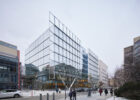
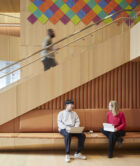

Addressing a dramatic growth in computer science degrees, this new building sits at the heart of the institute’s northern campus, serving as a dynamic, flexible, and inviting hub for education and research.
In 2019, the Massachusetts Institute of Technology (MIT) established the Schwarzman College of Computing (SCC) to usher a new approach to education in the computing age, with research ranging from artificial intelligence to the social, ethical, and policy dimensions of computer science. With nearly half of MIT’s undergraduate student body majoring or minoring in computer science, the new college needed a physical home—a center of gravity where students across the university could learn, research, and collaborate in computational studies.

Situated on Vassar Street—once the northern edge of the campus, and now a central thoroughfare as MIT expands—the building conveys a welcoming disposition and versatile environment for students and faculty. Contrasting with its brick and concrete neighbors, the SCC is conceived as twin pavilions clad in large glass shingles that extend beyond the building enclosure. These shingles establish a monumental presence while also playing a major role in the architecture’s sustainability strategy. Each shingle is composed of multiple layers, with double-skin glass on the outside and triple-insulated glass on the inside, to create a thermal buffer during the winter and reflect the sun in the summer.
At the building entrance, an ultra-transparent curtain wall steps back to widen the front plaza and reveal a dramatic, triple-height lobby finished in white oak veneer. This warm finish ensconces the first two floors, which comprise a central community space, a 60-seat classroom, a 250-seat lecture hall, tutoring areas, and two symmetrical flights of communicating stairs flanking a cascade of seating for impromptu meetings. Conference rooms greet the stairs where they peak on level three, which contrasts the natural materiality with a rawer palette of concrete and exposed ceilings.

Levels three through seven bring together student and faculty spaces across the building’s full footprint. Two-story “social kitchens” serve as the heart of these floors, with stairs overlooking each double-height space to stitch these research neighborhoods together. Beyond these central zones, faculty offices line the perimeter of the building, along with collaboration suites, conference rooms, and both dry and damp labs within. At the apex, a 340-person event area and terrace frames the Cambridge and Boston skyline.
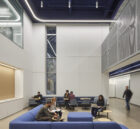

The site of the SCC presented a complex structural engineering challenge, as the Grand Junction Railway runs across the north side of the parcel. SOM explored several arrangements for the columns and load distribution before designing a clear 44-foot-long span over the tracks, with the three-story communicating stairs rising above. This placement of the columns required incredible precision to navigate the railway’s utilities, with only two inches of clearance. By pushing the columns to the edge of the structure, each floor can be modified as educational needs evolve, and will retain the flexibility to accommodate an expansion from the back in the future.

The project is targeting LEED Platinum certification through several strategies that, concurrently, create a healthy interior. The double-skin facade, working in tandem with solar-controlled fabric shades to bring in light and maintain indoor temperatures, reduces energy use by an estimated 31 percent below the LEED v4 baseline. SOM prioritized Red List Free materials, which contribute to a more social sensibility in meeting spaces throughout the building. Potable water use has been reduced by nearly 40 percent below the Environmental Protection Agency’s baseline through efficient fixtures, and that strategy is supplemented by onsite stormwater management and a large green roof. To remain resistant to floods, the building rises two feet above the street—a design move that also elevates its presence on Vassar Street.
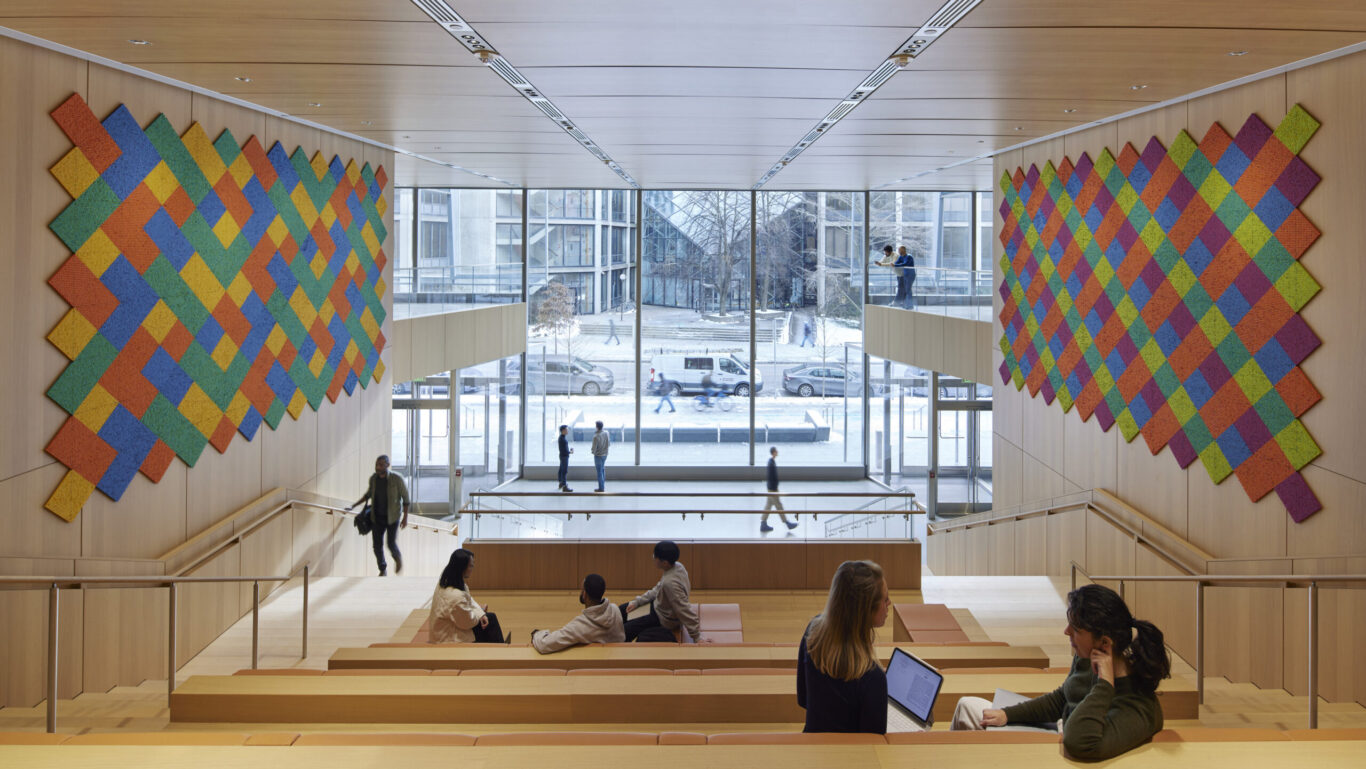
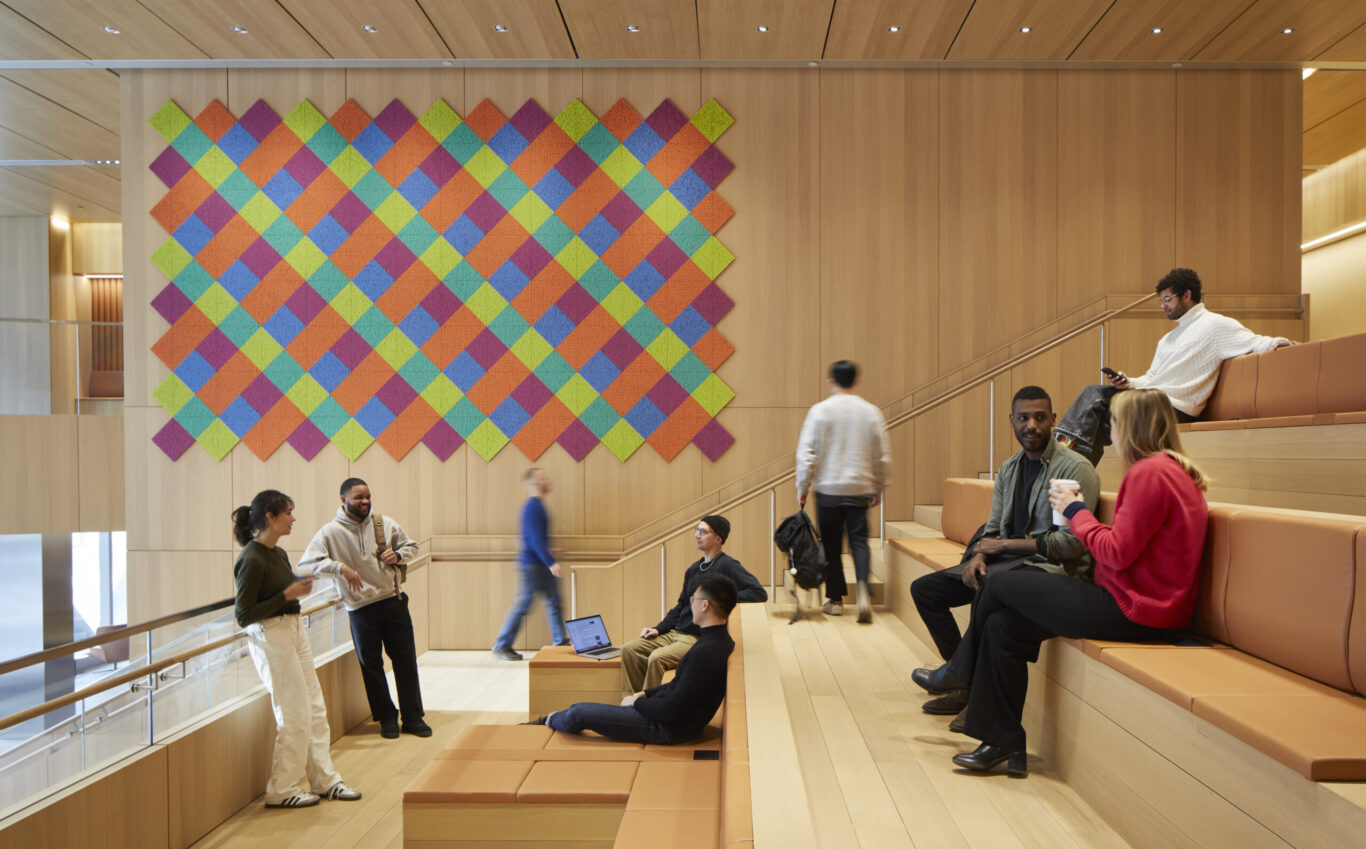
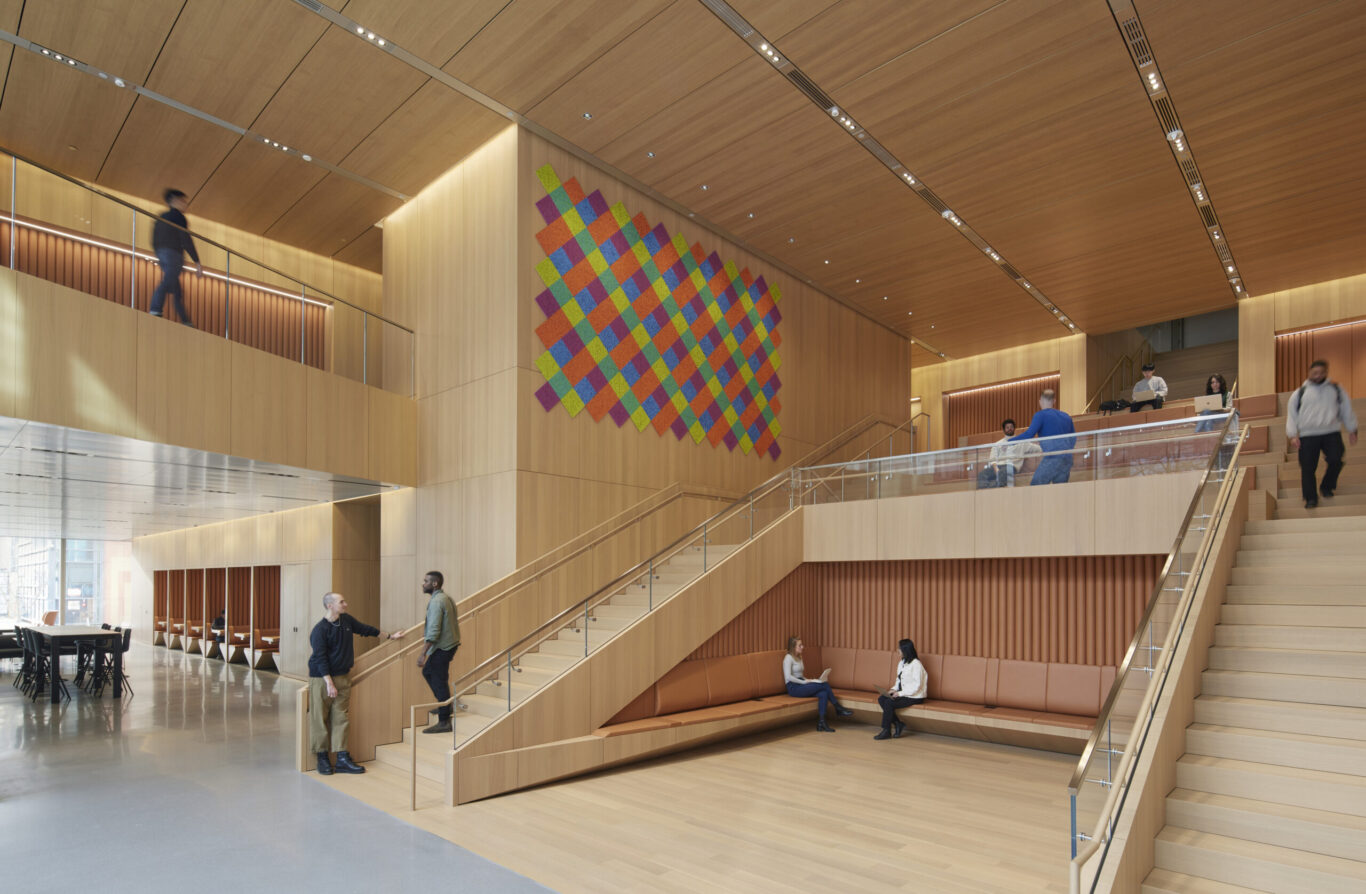
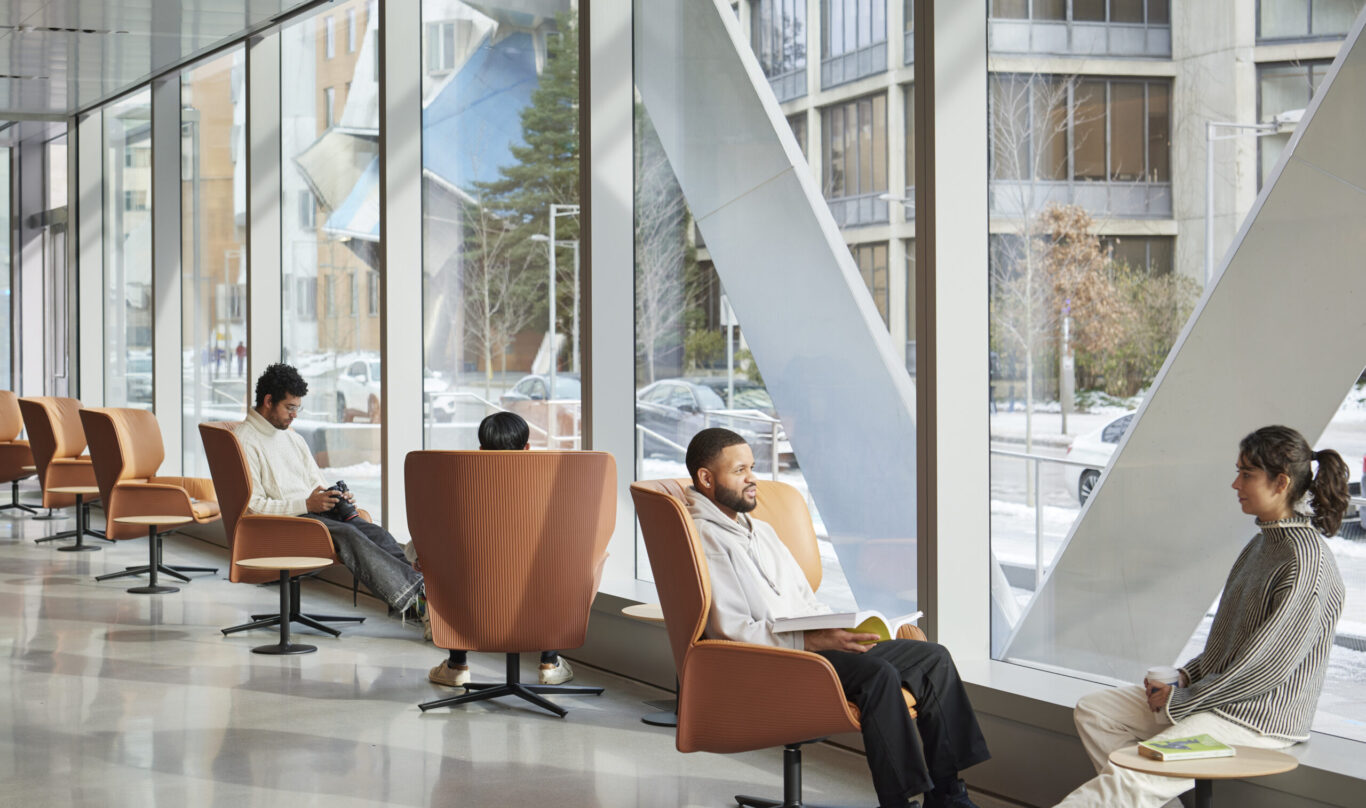
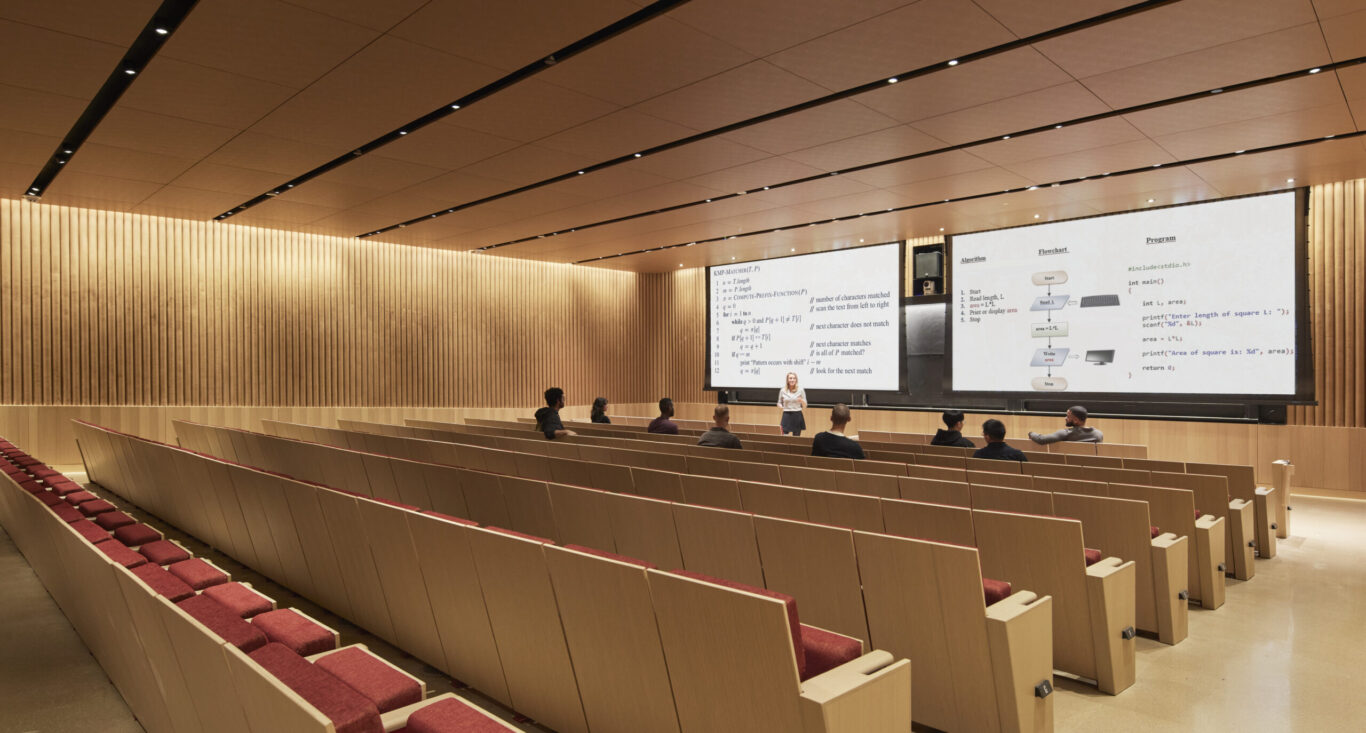
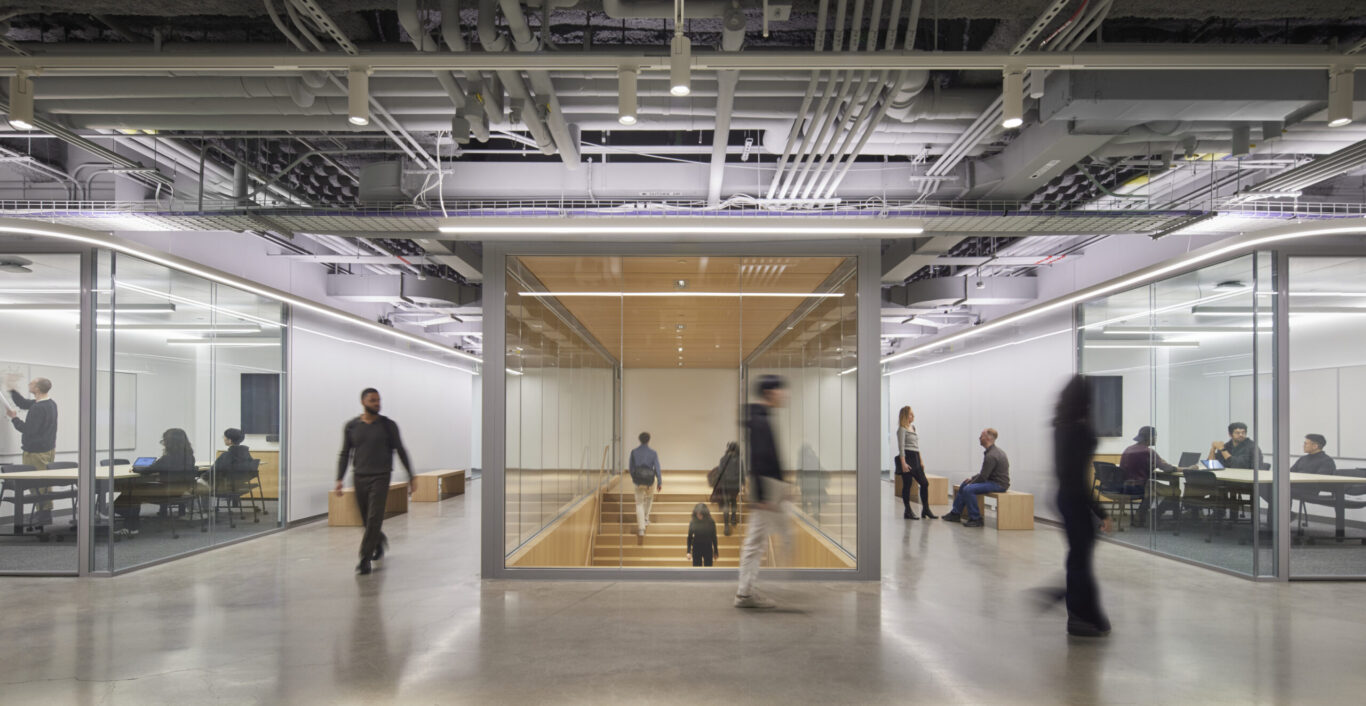
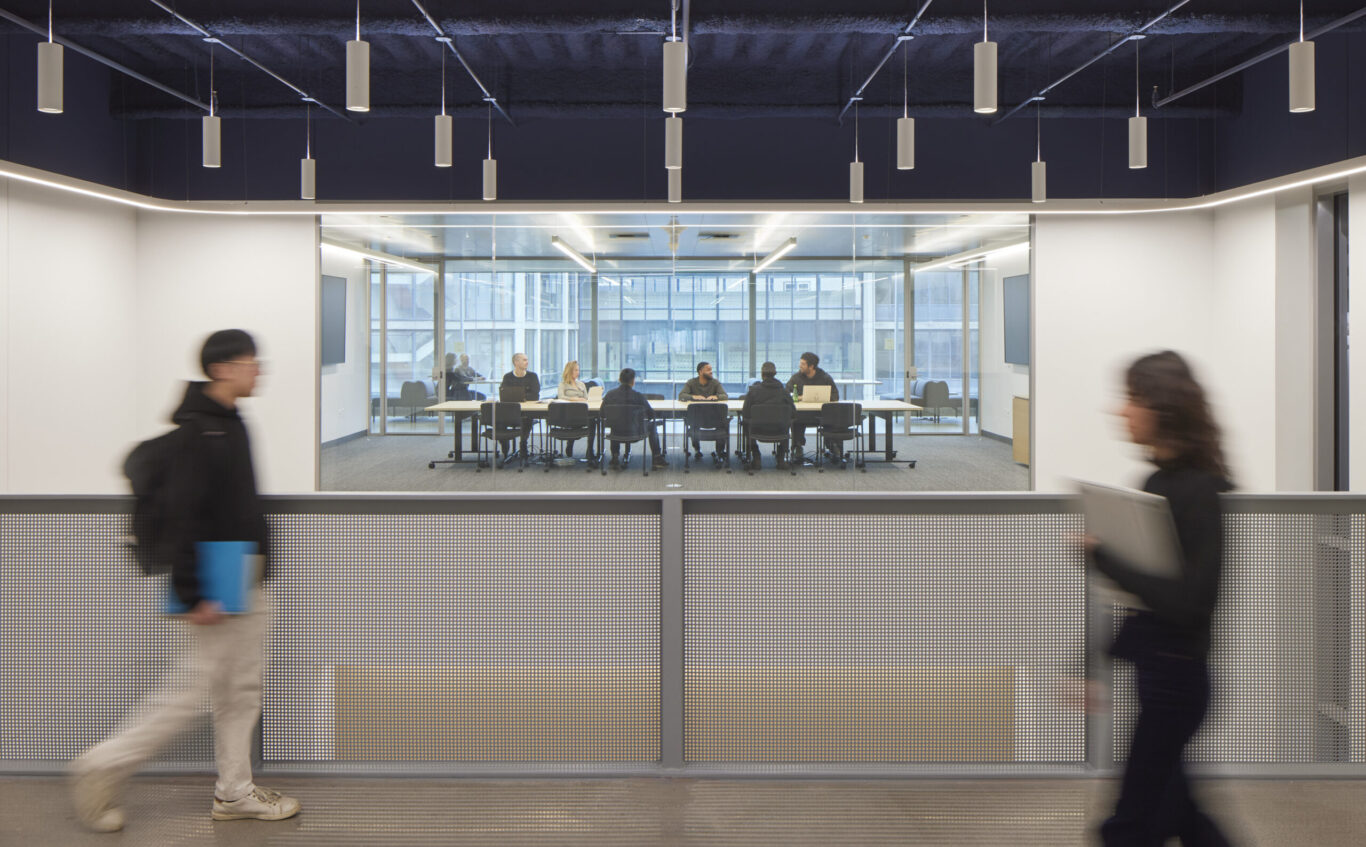
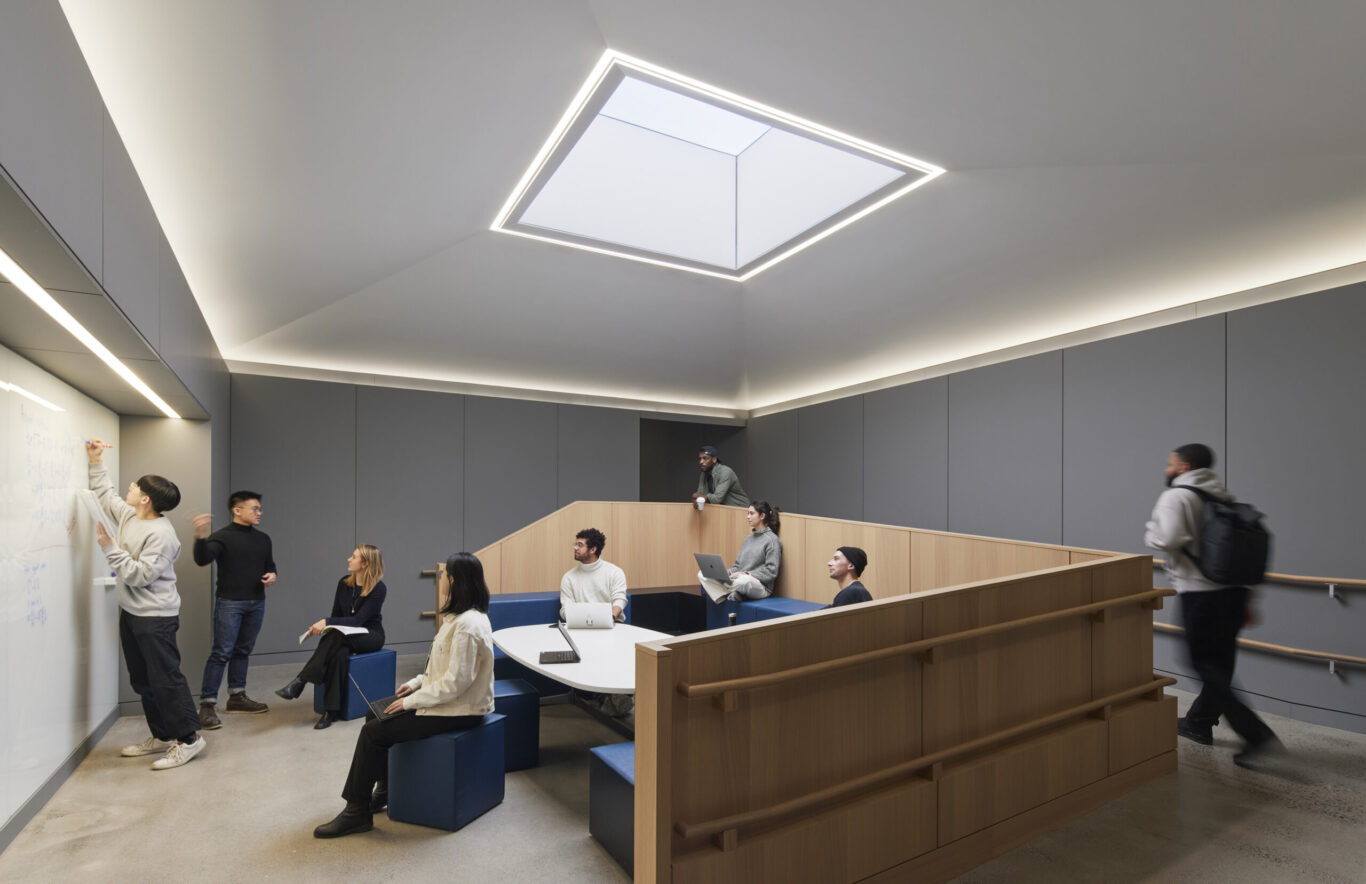
Storrs, Connecticut, United States
Stanford, California, United States
01/